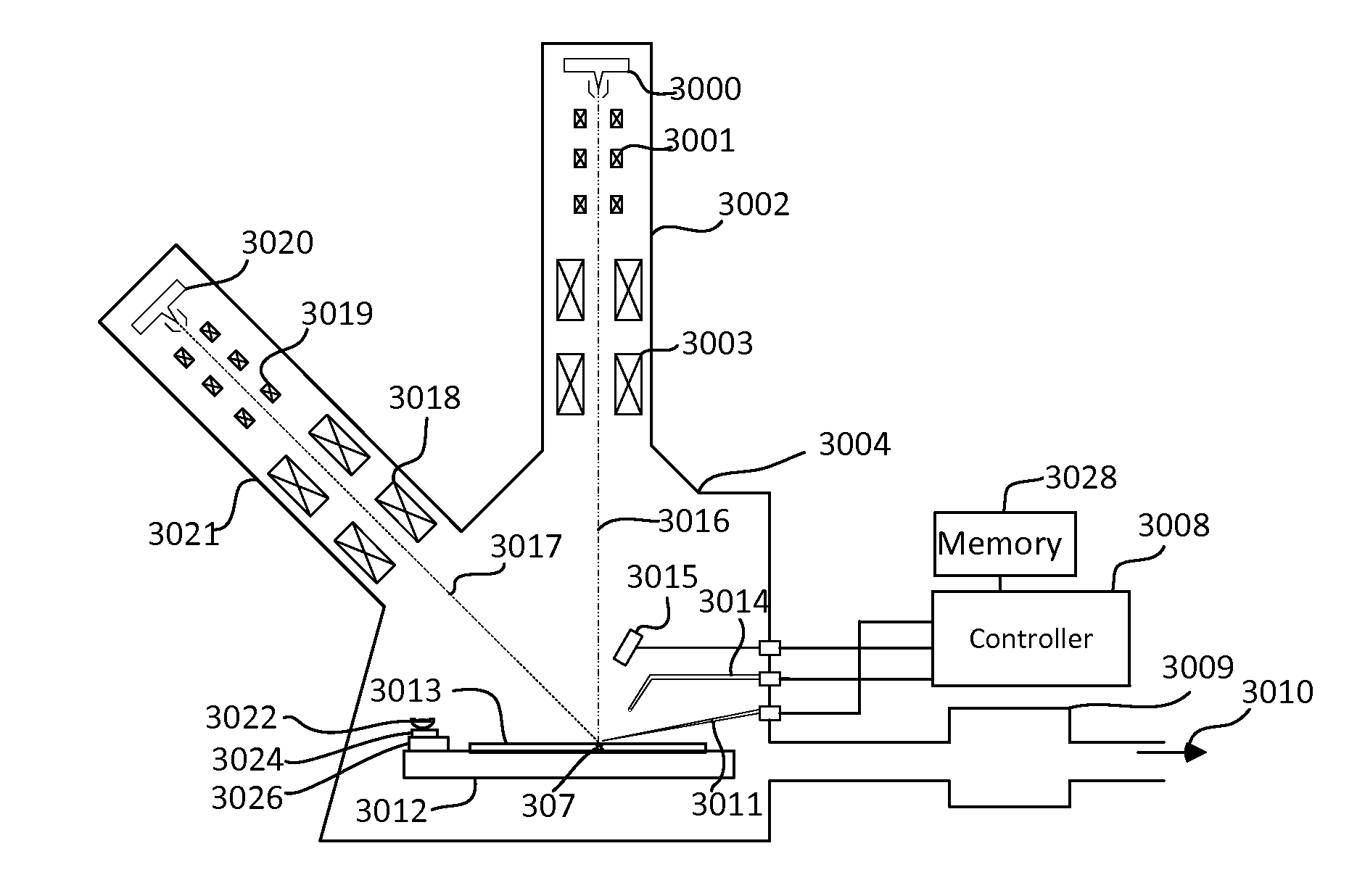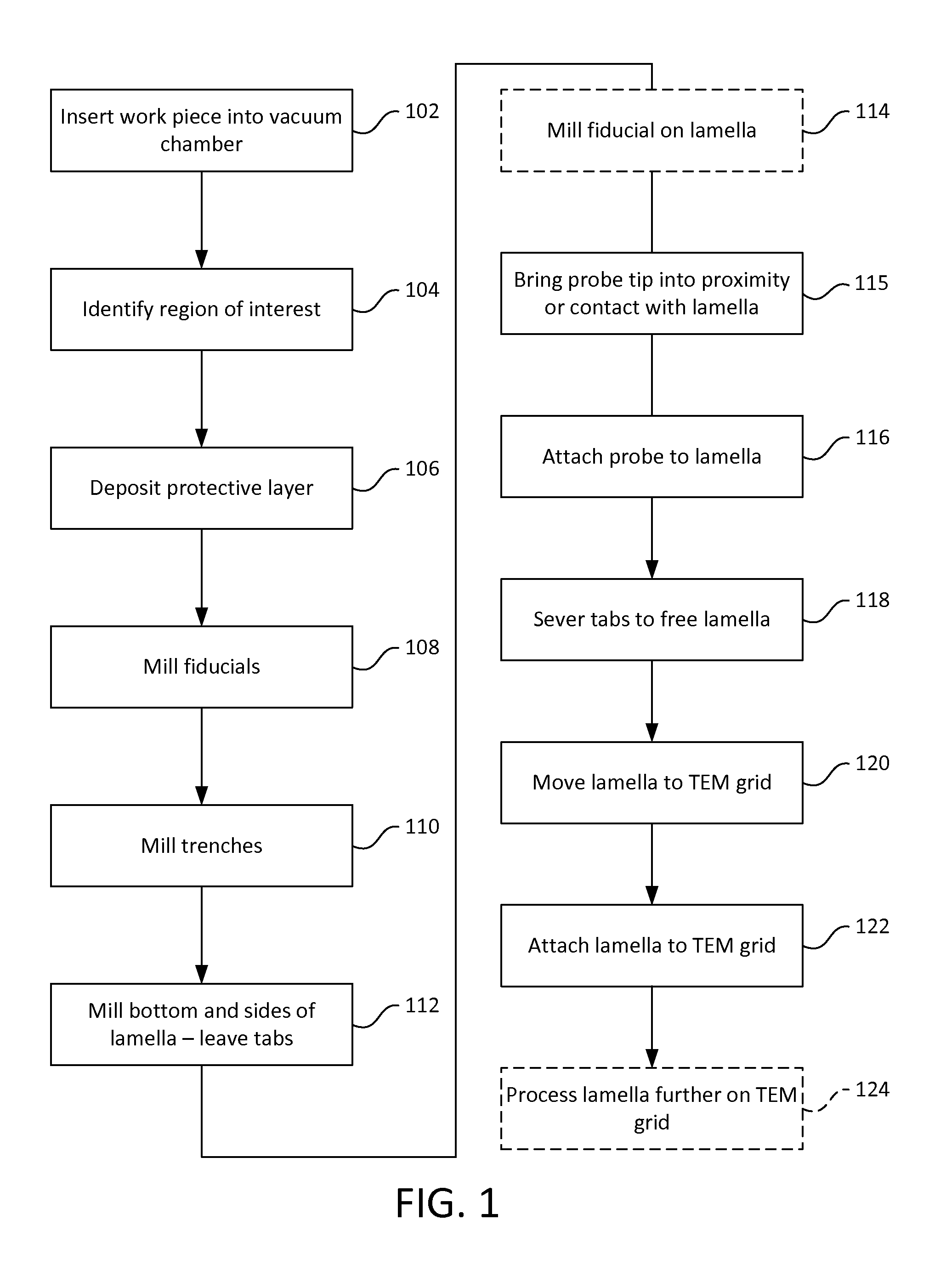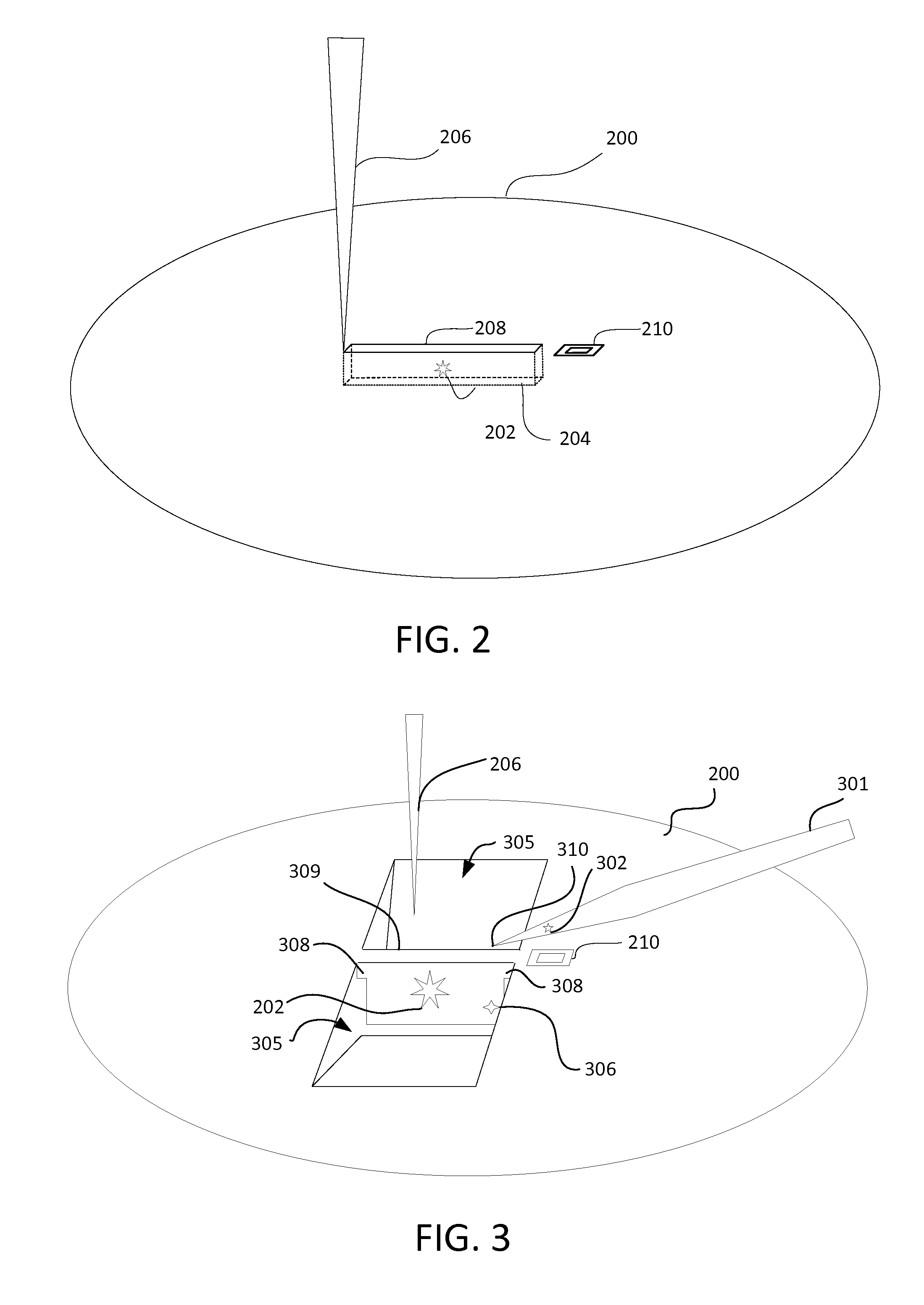Automated tem sample preparation
a sample preparation and automatic technology, applied in the field of automatic preparation of samples, can solve the problems of destroying much of the original sample, bending the sample, over-milling, etc., and achieve the effect of improving the automated performan
- Summary
- Abstract
- Description
- Claims
- Application Information
AI Technical Summary
Benefits of technology
Problems solved by technology
Method used
Image
Examples
Embodiment Construction
[0048]Preferred embodiments of the present invention are directed to various aspects of the production of thin lamellae for TEM analysis, including their extraction, transport, and subsequent attachment of the lamella to a sample grid for analysis by a fully or partly automated procedure.
[0049]The methods described below increase reliability to facilitate automation of each step in the lamella production and preparation.
[0050]Some embodiments of the present invention use a dual-beam charged particle system, with a scanning electron microscope (SEM) and a focused ion beam system (FIB) combined to process a sample in a vacuum chamber. The electron beam can produce a high resolution image, while the ion beam can mill the sample to form the lamella. The ion beam is also used for imaging, although the ion beam damages the work piece during imaging. The two beams allow images to be formed from two different perspectives, allowing the position of an object in three dimensional space to be ...
PUM
 Login to View More
Login to View More Abstract
Description
Claims
Application Information
 Login to View More
Login to View More - R&D
- Intellectual Property
- Life Sciences
- Materials
- Tech Scout
- Unparalleled Data Quality
- Higher Quality Content
- 60% Fewer Hallucinations
Browse by: Latest US Patents, China's latest patents, Technical Efficacy Thesaurus, Application Domain, Technology Topic, Popular Technical Reports.
© 2025 PatSnap. All rights reserved.Legal|Privacy policy|Modern Slavery Act Transparency Statement|Sitemap|About US| Contact US: help@patsnap.com



